|
|
Creator | Title | Description | Subject | Date |
| 451 |
 |
Dailey, Andrew T. | Guidelines for the performance of fusion procedures for degenerative disease of the lumbar spine. Part 15: electrophysiological monitoring and lumbar fusion | Standards. There is insufficient evidence to recommend a treatment standard. Guidelines. Use of intraoperative SSEP or DSEP monitoring is recommended as an adjunct in those circumstances during instrumented lumbar spinal fusion procedures in which the surgeon desires immediate intraoperative inform... | Fusion procedures; Degenerative disease; Lumbar spine; Low-back pain; Lumbar fusion; Electrophysiological monitoring; EMG | 2005 |
| 452 |
 |
Dailey, Andrew T. | Guidelines for the performance of fusion procedures for degenerative disease of the lumbar spine. Part 16: bone graft extenders and substitutes | Standards. The use of autologous bone or rhBMP-2 bone graft substitute is recommended in the setting of an ALIF in conjunction with a threaded titanium cage. Guidelines. There is insufficient evidence to recommend a treatment guideline. Options. 1) Recombinant human BMP-2 in combination with HA ... | Lumbar fusion; Lumbar spine; Bone graft; Treatment outcome; Practice guidelines; Degenerative disease | 2005 |
| 453 |
 |
Dailey, Andrew T. | Guidelines for the performance of fusion procedures for degenerative disease of the lumbar spine. Part 17: bone growth stimulators and lumbar fusion | Treatment Standards. There is insufficient evidence to recommend a treatment standard. Treatment Guidelines. Either DCS or CCS is recommended as an adjunct to spinal fusion to increase fusion rates in patients who are at high risk for arthrodesis failure following lumbar PLF. Pulsed electromagnetic... | Fusion procedures; Degenerative disease; Lumbar spine; Lumbar fusion; Bone growth stimulators; Electrical stimulation devices | 2005 |
| 454 |
 |
Dailey, Andrew T. | Guidelines for the performance of fusion procedures for degenerative disease of the lumbar spine. Part 1: introduction and methodology | As scientific understanding of the pathophysiology of degenerative disease of the lumbar spine has increased, the possibilities for correcting the underlying problem and the resulting improvement in clinical function have expanded exponentially. Fueled by advances in material technology and surgica... | Lumbar fusion; Lumbar spine; Degenerative disease; Practice guidelines | 2005 |
| 455 |
 |
Dailey, Andrew T. | Guidelines for the performance of fusion procedures for degenerative disease of the lumbar spine. Part 2: assessment of functional outcome | Standards. It is recommended that functional outcome be measured in patients treated for low-back pain due to degenerative disease of the lumbar spine by using reliable, valid, and responsive scales. Examples of these scales in the low-back pain population include the following: The Spinal Stenosi... | Lumbar fusion; Lumbar spine; Degenerative disease; Practice guidelines; Treatment outcome; Functional outcome | 2005 |
| 456 |
 |
Dailey, Andrew T. | Guidelines for the performance of fusion procedures for degenerative disease of the lumbar spine. Part 3: assessment of economic outcome | Standards. There is insufficient evidence to recommend a standard for assessment of economic outcome following lumbar fusion for degenerative disease. Guidelines. There is insufficient evidence to recommend a guideline for assessment of economic outcome following lumbar fusion for degenerative dis... | Lumbar fusion; Lumbar spine; Degenerative disease; Practice guidelines; Treatment outcome; Economic outcome | 2005 |
| 457 |
 |
Dailey, Andrew T. | Guidelines for the performance of fusion procedures for degenerative disease of the lumbar spine. Part 4: radiographic assessment of fusion | Standards. Static lumbar radiographs are not recommended as a stand-alone means to assess fusion status following lumbar arthrodesis surgery. Guidelines. 1) Lateral flexion and extension radiography is recommended as an adjunct to determine the presence of lumbar fusion postoperatively. The lack ... | Lumbar fusion; Lumbar spine; Degenerative disease; Practice guidelines; Radiographic assessment | 2005 |
| 458 |
 |
Dailey, Andrew T. | Guidelines for the performance of fusion procedures for degenerative disease of the lumbar spine. Part 5: correlation between radiographic and functional outcome | Standards. There is insufficient evidence to recommend a treatment standard. Guidelines. There is insufficient evidence to recommend a treatment guideline. Options. It is recommended that when performing lumbar arthrodesis for degenerative lumbar disease, strategies to achieve successful radiogr... | Lumbar fusion; Lumbar spine; Degenerative disease; Practice guidelines; Functional outcome; Radiographic outcome | 2005 |
| 459 |
 |
Dailey, Andrew T. | Guidelines for the performance of fusion procedures for degenerative disease of the lumbar spine. Part 6: magnetic resonance imaging and discography for patient selection for lumbar fusion | Standards. There is insufficient evidence to recommend a treatment standard. Guidelines. 1) It is recommended that MR imaging be used as a diagnostic test instead of discography for the initial evaluation of patients with chronic low-back pain. 2) It is recommended that MR imaging-documented dis... | Lumbar fusion; Lumbar spine; Degenerative disease; Practice guidelines; Patient selection; Discography | 2005 |
| 460 |
 |
Dailey, Andrew T. | Guidelines for the performance of fusion procedures for degenerative disease of the lumbar spine. Part 7: intractable low-back pain without stenosis or spondylolisthesis | Standards. Lumbar fusion is recommended as a treatment for carefully selected patients with disabling lowback pain due to one- or two-level degenerative disease without stenosis or spondylolisthesis. Guidelines. There is insufficient evidence available to support a treatment guideline. Options. An... | Fusion; Lumbar spine; Degenerative disease; Low back pain | 2005 |
| 461 |
 |
Dailey, Andrew T. | Guidelines for the performance of fusion procedures for degenerative disease of the lumbar spine. Part 8: lumbar fusion for disc herniation and radiculopathy | Standards. There is insufficient evidence to recommend a treatment standard. Guidelines. There is insufficient evidence to recommend a treatment guideline. Options. 1) Lumbar spinal fusion is not recommended as routine treatment following primary disc excision in patients with a herniated lumbar... | Fusion; Lumbar spine; Degenerative disease; Lumbar fusion; Disc herniation; Radiculopathy | 2005 |
| 462 |
 |
Dailey, Andrew T. | Guidelines for the performance of fusion procedures for degenerative disease of the lumbar spine. Part 9: fusion in patients with stenosis and spondylolisthesis | Guidelines. The performance of a lumbar PLF is recommended for patients with lumbar stenosis and associated degenerative spondylolisthesis who require decompression. There is insufficient evidence to recommend a treatment guideline. Options. Pedicle screw fixation as an adjunct to lumbar PLF should ... | Fusion; Lumbar spine; Degenerative disease; Lumbar fusion | 2005 |
| 463 |
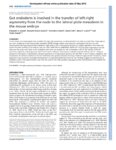 |
Lucero, Mary T. | Gut endoderm is involved in the transfer of left-right asymmetry from the node to the lateral plate mesoderm in the mouse embryo | | | 2012-01-01 |
| 464 |
 |
Couldwell, William T. | Harvey cushing and oskar hirsch: early forefathers of modern transsphenoidal surgery | The transnasal transsphenoidal approach is the preferred route for removal of most lesions of the sella turcica. The concept of transnasal surgery traversing the sphenoid sinus to reach the sella has existed for nearly a century. A comprehensive historical overview of the evolution of transsphenoida... | | 2005 |
| 465 |
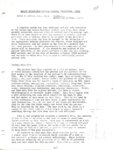 |
Warner, Homer R. | Health Evaluation Through Logical Processing - HELP | Biomedical Informatics | | 1973 |
| 466 |
 |
Couldwell, William T. | Hearing restoration after resection of an intracanalicular vestibular schwannoma: a role for emergency surgery? | Patients with vestibular schwannomas (VSs) most commonly present with sensorineural hearing loss, which is often insidious or gradual. Up to 26% of patients may present with sudden hearing loss, however, which poses an important surgical challenge. Sudden hearing loss has been attributed to spasm or... | Vestibular schwannoma; Hearing preservation | 2002 |
| 467 |
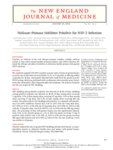 |
Kriesel, John D. | Helicase-primase inhibitor pritelivir for HSV-2 infection | Background Pritelivir, an inhibitor of the viral helicase-primase complex, exhibits antiviral activity in vitro and in animal models of herpes simplex virus (HSV) infection. We tested the efficacy and safety of pritelivir in otherwise healthy persons with genital HSV-2 infection. Methods We randomly... | | 2014-01-01 |
| 468 |
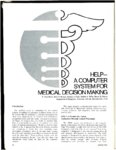 |
Warner, Homer R. | HELP - A Computer System for Medical Decision Making | Biomedical Informatics | | 1975 |
| 469 |
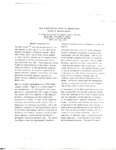 |
Warner, Homer R. | HELP - A Hospital-Wide System for Computer-Based Support of Decision-Making | Biomedical Informatics | | 1981 |
| 470 |
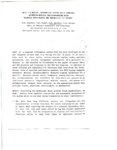 |
Warner, Homer R. | HELP - A Medical Information System Which Combines Automated Medical Decision-Making With Clinical Data Review and Administrative Support | Biomedical Informatics | | 1985 |
| 471 |
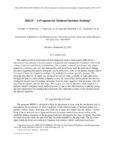 |
Warner, Homer R. | HELP - A Program for Medical Decision-Making | Biomedical Informatics | | 1972 |
| 472 |
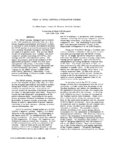 |
Warner, Homer R. | HELP - A Total Hospital Information System | Biomedical Informatics | | 1980 |
| 473 |
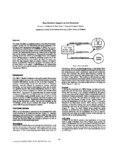 |
Warner, Homer R. | HELP Decision Support on the Macintosh | Biomedical Informatics | | 1987 |
| 474 |
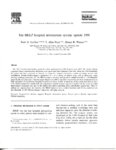 |
Warner, Homer R. | The HELP Hospital Information System: Update 1998 | Biomedical Informatics | | 1999 |
| 475 |
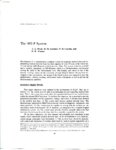 |
Warner, Homer R. | The HELP System | Biomedical Informatics | | 1983 |

























